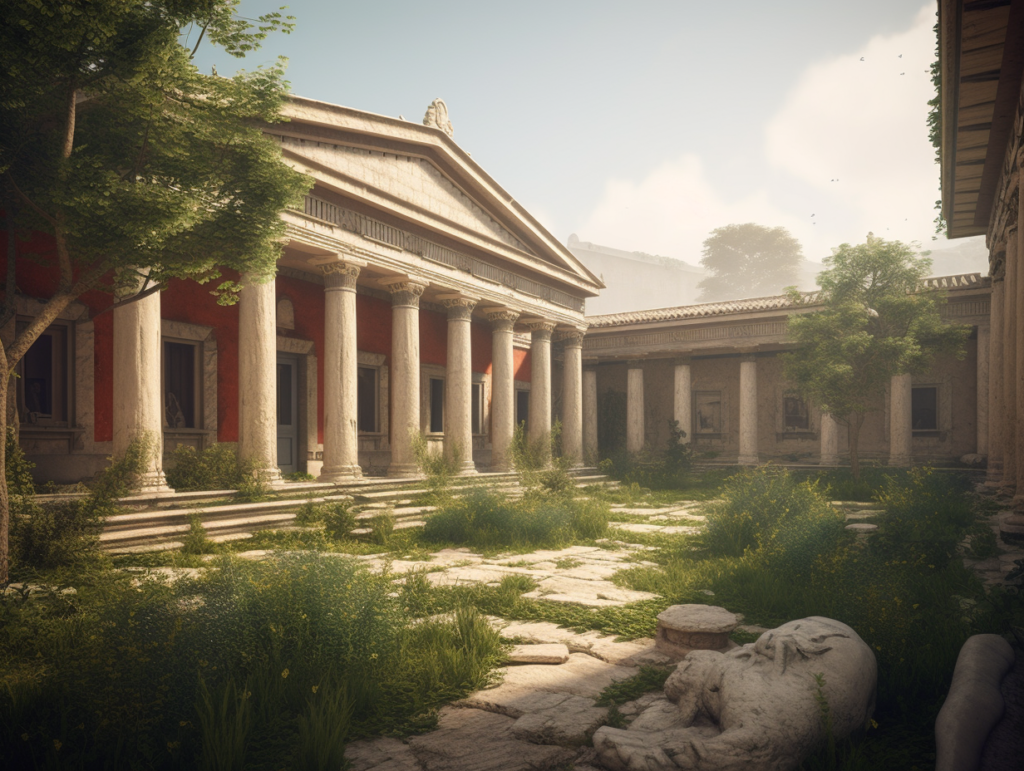The ancient Greeks left an indelible mark on the world with their contributions to art, philosophy, and science. One of the most enduring legacies of this ancient civilization is its architecture. Ancient Greek architecture is renowned for its timeless beauty, precision, and profound influence on the development of architectural styles throughout history. In this article, we will delve into the key elements and historical significance of ancient Greek architecture.
The Foundations of Greek Architecture
Ancient Greek architecture has its roots in the Mycenaean civilization that existed from approximately 1600 to 1100 BCE. However, it was during the Classical period, which spanned from the 5th to the 4th century BCE, that Greek architecture reached its zenith. Three principal architectural orders emerged during this period: the Doric, Ionic, and Corinthian.
1. Doric Order:
The Doric order is characterized by its simplicity and strength. Doric columns are sturdy and fluted, with no base. At the top of each column is a capital, which consists of a square abacus and a rounded echinus. The most famous example of Doric architecture is the Parthenon, a temple dedicated to the goddess Athena in Athens. Its symmetrical design and imposing columns have made it an enduring symbol of ancient Greek architecture.
2. Ionic Order:
The Ionic order is more graceful and ornate than the Doric. Ionic columns are slender, fluted, and stand on a base. The capitals of Ionic columns are adorned with volutes, scroll-like elements that add an elegant touch. The Temple of Artemis at Ephesus, one of the Seven Wonders of the Ancient World, showcases the beauty of Ionic architecture.
3. Corinthian Order:
The Corinthian order is the most elaborate of the three. It features columns with flutes, bases, and capitals adorned with intricate acanthus leaves. The Temple of Olympian Zeus in Athens exemplifies the Corinthian order’s opulence.
Architectural Elements
Greek architecture is celebrated for its meticulous attention to detail. Key elements include:
1. Pediments: Triangular gables at the ends of temples often adorned with intricate sculptures, depicting mythological scenes or historical events.
2. Friezes: Decorative bands typically featuring relief sculptures. The Parthenon’s frieze, known as the Panathenaic frieze, is a prime example.
3. Metopes: Rectangular panels often embellished with sculptures, situated between the triglyphs on Doric friezes.
4. Entablature: The horizontal structure above the columns, comprising the architrave, frieze, and cornice.
Historical Significance
The legacy of ancient Greek architecture is profound and far-reaching. It laid the foundation for subsequent architectural styles in the Western world, including Roman, Byzantine, Renaissance, and Neoclassical architecture. The principles of proportion, symmetry, and balance that defined Greek architecture continue to influence architects and designers today.
Furthermore, ancient Greek architecture was deeply intertwined with religious and cultural beliefs. Temples, the most iconic architectural structures of ancient Greece, were not only places of worship but also symbols of civic pride and cultural identity. The Parthenon, for instance, embodied the ideals of democracy and the supremacy of Athens in the 5th century BCE.
Conclusion
Ancient Greek architecture stands as a testament to human creativity, ingenuity, and craftsmanship. Its enduring influence on architectural design, from the classical era to the present day, highlights the timelessness of its beauty and the profound impact of Greek civilization on the world. As we marvel at the majestic columns, intricate sculptures, and harmonious proportions of ancient Greek temples, we continue to be inspired by the remarkable architectural achievements of this ancient civilization.







